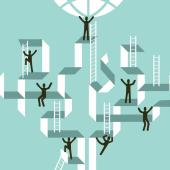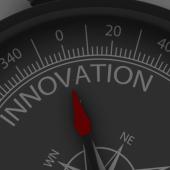Design thinking, the framework for success
What sits at the heart of success? A quick flick through the search engines might suggest that hard work might be one of the prime contenders. Now I’m not decrying the value of hard work, but simply grafting away, putting the hours in, is never going to lead to the kind of success that you are envisaging.
Why not? Well for a start there are all those studies which prove that working excess hours will only lead to burnout. In other words, the more you do the more tired you get; leading to an increase in mistakes and a slowing down in output. So much so that the piece from Stanford University reveals that “productivity during 60 hour weeks would be less than two-thirds that of what it was when 40 hour weeks were worked.” [1]
But of course, hard work doesn’t necessarily mean flinging hours at the problem; and this is where another cliché comes in, it’s time to work smart. In a nutshell, this requires leaders to build an understanding of the organisation and then to design a framework which will sit at the heart of the business, pumping out the conditions for success.
For me this framework is built from intelligence, collaboration and adaptability; the core requirements for Next Generation Organisations, or ‘Organisation Z’ as I now call them. These are businesses which understand that the future will not be delivered through existing ways of working and that they “need to master strategic innovation in order to deliver new business models and differentiated experiences.” [2]
I was intrigued therefore to see a report from ‘The Corporate Rebels’ [3] highlighting the way in which a study by IDEO largely mirrored their own research into the ingredients for corporate success. Essentially, through analysing the success points for one hundred innovative companies, IDEO identified six common characteristics. On further inspection, these six characteristics tie in closely with the core requirements which I have identified for Next Generation organisations.
Let’s start with intelligence. Far too many organisations still believe that as long as you have lots of data you don’t need anything else. But true intelligence steps away from knowing stuff and instead seeks to really build a deep understanding of customers and the marketplace. This has a direct correlation with the IDEO characteristic of looking out, moving beyond the walls of the company to understand customers, technologies and cultural shifts. It also ties in with purposefulness, understanding that the company exists as more than simply a moneymaking machine.
Moving on to collaboration; the Next Generation idea that silos are out, replaced by a more open way of working which looks to draw ideas in from every sector. This too aligns directly with the IDEO characteristics of empowerment and collaboration, reducing constraints in order to provide a clear path towards change and working together across functions in order to facilitate delivery. And then there’s adaptability: developing products which solve a genuine problem and add real value to the customer and bringing them to market when they are needed rather than several years behind the curve. Here again this ties in with experimentation and refinement; trying out new ideas and bridging vision and execution in order to bring products to the marketplace.
When you think about it, it is hardly surprising that the two suites of ideas tie together so closely. Both have echoes in the design thinking model and both are looking towards true innovation; designing and delivering products and services which really make a difference rather than just producing stuff. The world is ever-changing and what sits at the heart of success is a framework which puts design thinking, culture and people at the forefront of product delivery.
That requires a whole new way of thinking. Carry on with insular, multi-hour, working and the arteries of your organisation will slowly clog up until they can no longer support the life of the business. On the other hand, opening up the organisation to deliver innovation through a framework which sits at the heart of business, pumping ideas and freshness and enthusiasm throughout the organisation and great things can happen.






